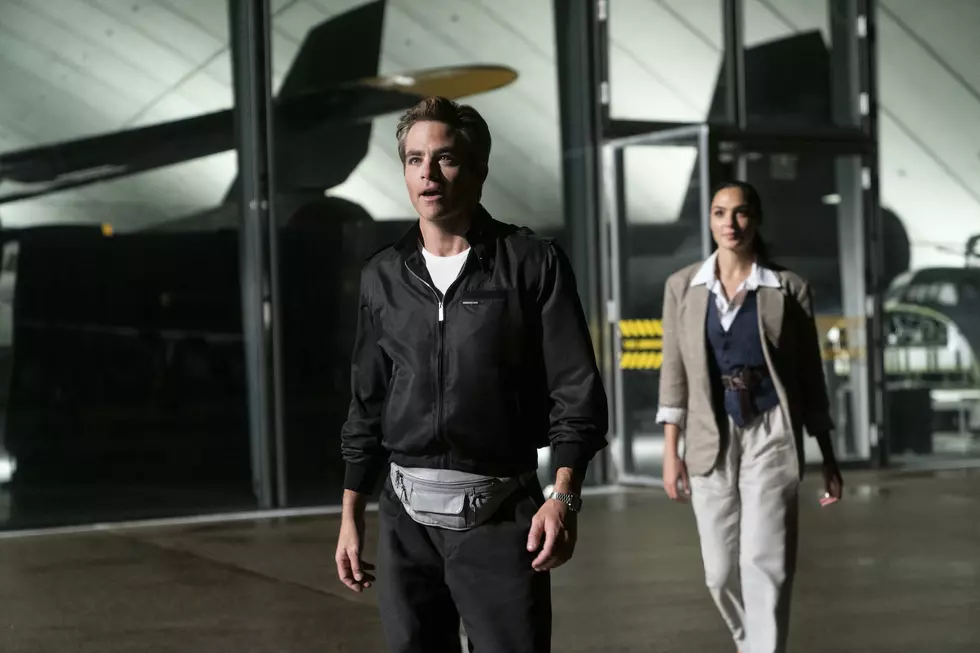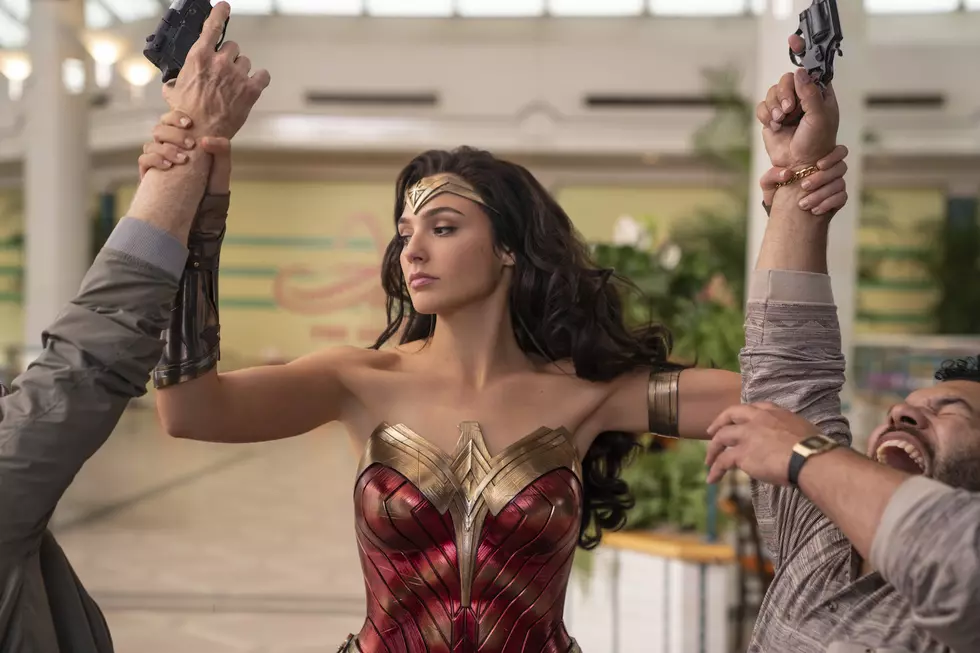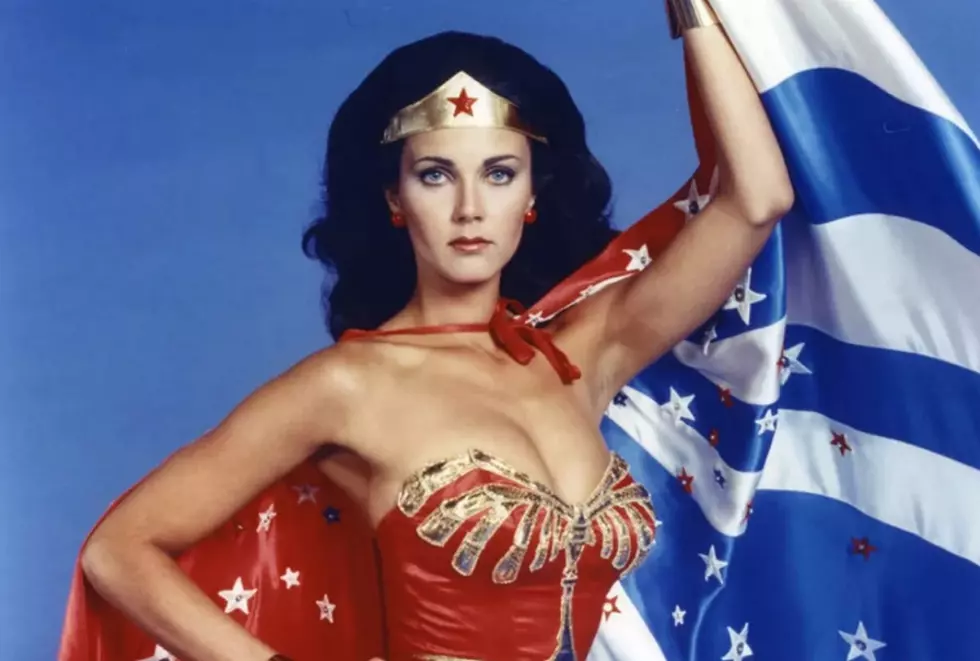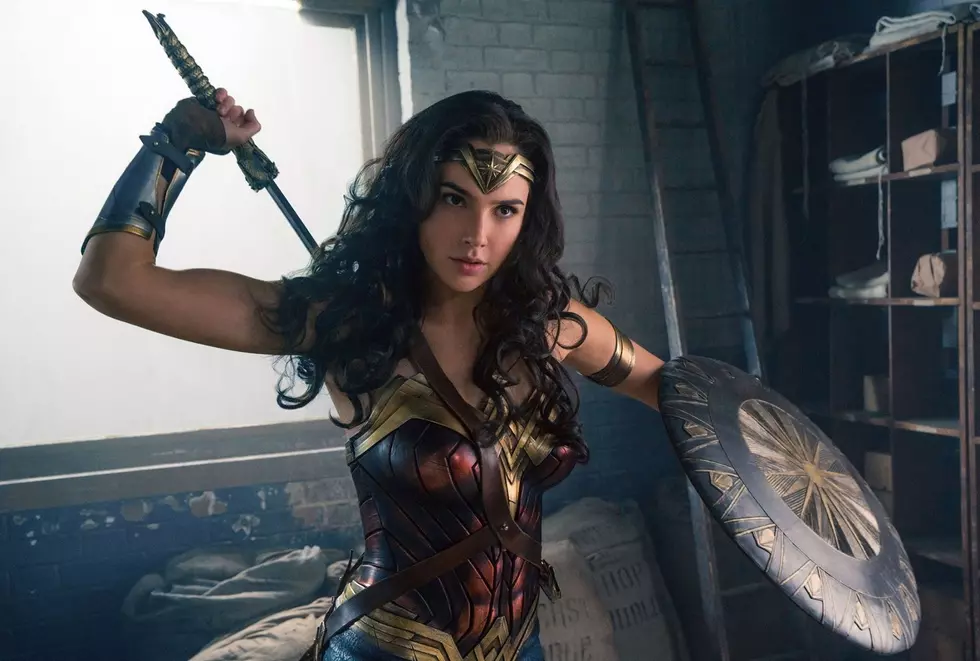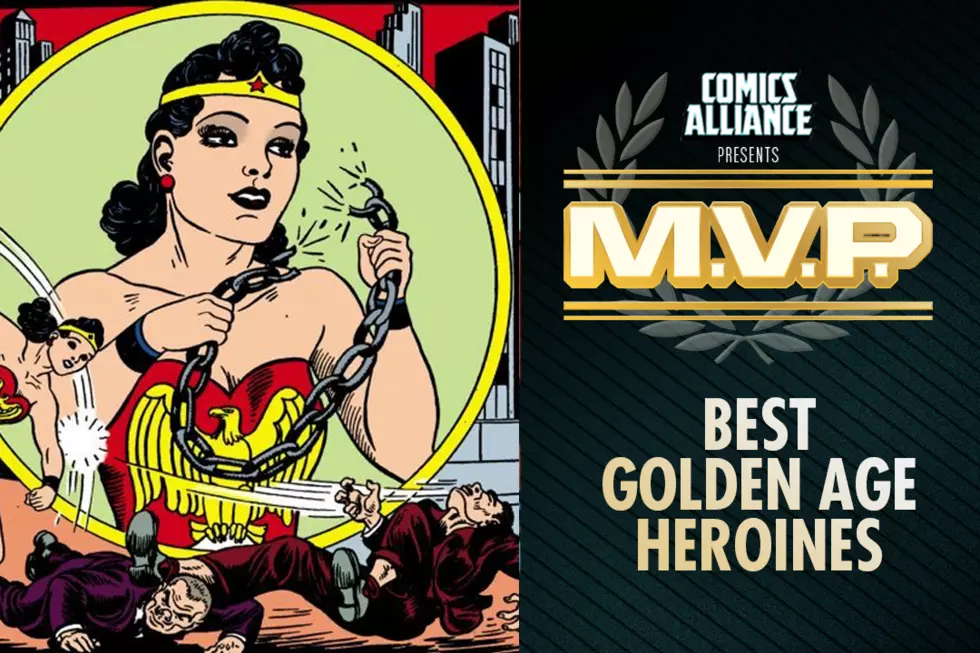
The Evolution of Wonder Woman: Best Wonder Woman Stories by Decade
Many of comics’ most popular heroes have been around for decades, and in the case of the big names from the publisher now known as DC Comics, some have been around for a sizable chunk of a century. As these characters passed through the different historical eras known in comics as the Golden Age (the late 1930s through the early 1950s), the Silver Age (the mid 1950s through the late 1960s), the Bronze Age (the early 1970s through the mid 1980s) and on into modern times, they have experienced considerable changes in tone and portrayal that reflect the zeitgeist of the time.
With this feature we’ll help you navigate the very best stories of DC Comics’ most beloved characters decade by decade. This week, we’re taking a look at Wonder Woman.
1940s: “Battle for Womanhood”
Wonder Woman vol 1 #5, by William Moulton Marston and HG Peter
The fact is, Wonder Woman is never better than in the Golden Age, when the book was a pure expression of the philosophies of its creator, William Moulton Marston. Every panel is infused with metaphors for Marston's ideas about feminism, rehabilitation of criminals, and “loving submission.” That might sound boring until you realize these ideas were wrapped in stories about men from Mars, gorillas transformed into humans, Nazis stealing milk, and giant kangaroos that can jump into space.
Much hay has been made about elements of bondage and other sexual fetishes in the early days of the book, but if you read the actual comics and not just a poorly researched listicle on a click-baitier website than this, you'll see that the sexual elements are pretty much just subtext, and the bondage is, for Marston, less about sex than about a metaphor for men's oppression of women.
The selection here is a great representation of the raw creativity of this era, featuring the first appearance of recurring villain Dr Psycho in a story about ectoplasm that would make Mike Mignola jealous, a solo adventure by Wonder Woman's sorority girl sidekick Etta Candy, and a story about the Sky Kangas jumping to Mars. Hard to beat.
Wonder Woman's earliest adventures can be found in The Wonder Woman Chronicles.
Best of the rest: “Introducing Wonder Woman/Wonder Woman Arrives in Man's World” (All-Star Comics #8, Sensation Comics vol 1 #1), “The Menace of Dr Poison” (Sensation Comics vol 1 #2), “The Coming of Paula von Gunther” (Sensation Comics vol 1 #4), “The Milk Racket of Paula von Gunther” (Sensation Comics vol 1 #7), “Mars Is Triumphant!” (Wonder Woman vol 1 #2)
1950s: “Wonder Woman, Amazon Teen-Ager!”
Wonder Woman vol 1 #107, by Robert Kanigher and Ross Andru
Robert Kanigher would be the editor and writer on Wonder Woman for over twenty years, beginning with Marston's death in 1947. But Wonder Woman's Silver Age era is not considered to have begun until Ross Andru joined the book with issue 98. This period saw a marked decrease in feminist themes in the book, as many plots focused on Diana alternately welcoming and refusing the romantic advances of Steve Trevor, a merman, and a bird person. Wonder Woman's origin is also considerably retconned for the first — but hardly the last — time.
One of the hallmarks of Silver Age Wonder Woman ids the stories about Wonder Girl, who is Diana as a teen Amazon, and later, stories about Wonder Tot, Diana when she is, well, a tot. The popularity of these stories would lead to the advent of the “Impossible Story,” in which Wonder Woman's mother Hippolyta would splice together film footage of Wonder Tot, Wonder Girl, Wonder Woman and herself to make it look like they had a cool yet impossible team-up. (It was confusion over these stories that led to the introduction of Donna Troy in Teen Titans. I mean, Bob Haney saw Wonder Woman hanging out with a Wonder Teen; how was he supposed to know Kanigher was crazy?)
The selection here is one of the earliest Wonder Girl stories, in which she must perform three super-feats in order to claim the elements that make up the iconic Wonder Girl costume, and she hangs out a lot with the mermaid boy who would take up so much of her time as a teen.
Wonder Woman's Silver Age adventures are collected in the Showcase Presents Wonder Woman series.
Best of the rest: “The Bird Who Revealed Wonder Woman's Identity” (Wonder Woman vol 1 #76), “The Million Dollar Penny!” (Wonder Woman vol 1 #98), “The Secret Origin of Wonder Woman!” (Wonder Woman vol 1 #105), “The Fun House of Time!” (Wonder Woman vol 1 #101)
1960s: “The Wrath of Dr. Cyber”
After a decade of these Silver Age shenanigans, the book went in a decidedly different direction when Denny O'Neil and Mike Sekowsky took over the book in 1968. These stories featured Diana losing her powers, purchasing a mod fashion boutique, and gaining a new mentor named I Ching. The new Diana Prince adventures ranged in genre from stylish espionage to sword and sorcery, with the earliest stories being a pastiche of James Bond and the Avengers (no, the other Avengers), with Diana in the Emma Peel role.
While this era of the book is known by many fans as a strange aberration in Wonder Woman's history, these stories are really quite excellent and stylish, and many of them address women's issues in a more serious way than possibly ever before.
(Ironically, this direction for Wonder Woman would be reversed largely as a result of the efforts of Gloria Steinem, who wrote in Ms. Magazine about her displeasure at comics' most famous heroine losing her powers and iconic costume. So they brought Kanigher back. Be careful what you wish for, I guess).
The fact is, the Diana Prince era contains the best Wonder Woman comics outside of Marston's run.
Best of the rest: “Wonder Girl vs the Teenage Monster” (Wonder Woman vol 1 #151), “The Impossible Day” (Wonder Woman vol 1 #124), “Wonder Tot and Mister Genie” (Wonder Woman vol 1 #126), “I Married a Monster” (Wonder Woman vol 1 #155)
1970s: “The Twelve Labors”
Wonder Woman vol 1 #212-222, by various
The seventies were a time of constant change for Wonder Woman. After the editorially mandated end of the Diana Prince era and the brief return of Robert Kanigher, in which he introduced Nubia, Wonder Woman's black twin sister, the book saw the return of Wonder Woman's traditional powers and costume in the story “The Twelve Labors.” This story, by such Bronze Age luminaries as Martin Pasko, Elliot S Maggin, Len Wein and Curt Swan, saw Wonder Woman forced to carry out twelve super tasks in order to be re-admitted to the Justice League, which she had quit upon earlier losing her powers.
Later, the book would change its setting to Earth-2 (an alternate Earth in which the 1940s version of DC's characters live on) when the first season of the popular Wonder Woman TV show was set during World War II. It would, of course, shift back when the second season of the show was set in the ultra-modern '70s.
The majority of the decade had no clear creative direction for the book, with creative teams rarely lasting for more than a handful of consecutive issues.
Best of the rest: “The Fist of Flame” (Wonder Woman vol 1 #201-202), “War of the Wonder Women” (Wonder Woman vol 1 204-206), “Earth-Quaker” (Wonder Woman vol 1 #187-188)
1980s: “Gods and Mortals”
Wonder Woman vol 2 #1-7, by George Perez, Len Wein and Greg Potter
The first half of the 1980s meandered nearly as much as the 1970s, with most stories seeming to focus on indecision over whether or not Steve Trevor should be alive. The middle of the decade, however, brought Crisis on Infinite Earths, which allowed for a revamp of DC's major characters. Taking his cues from Frank Miller's Batman and John Byrne's Superman, writer/artist George Perez (together with scripters Greg Potter and Len Wein) rebuilt Wonder Woman from the ground up, incorporating mythological elements in a more serious way than had been done in the book prior.
This era saw an expanded supporting cast, sharply defined villains, and the erasure of Wonder Woman's Diana Prince secret identity. While the density of story-telling in use in these issues might not appeal to new readers unused to heavily-captioned pages, this era remains one of the most critically acclaimed in Wonder Woman history.
Best of the rest: “Challenge of the Gods” (Wonder Woman vol 2 #8-14), The Legend of Wonder Woman #1-4, “The Serpent and the Amazon” (Wonder Woman vol 1 #274-278), “Strangers in Paradise” (Wonder Woman vol 2 #37-40)
1990s: “The Contest”
Let's be honest: there's nothing I could put here that would make anyone happy. The '90s were not a great decade for Wonder Woman. The best run of this era is that by writer William Messner-Loebs, who started after Perez's departure, but even this is highly contentious among fans. Loebs's approach to the book was idiosyncratic, most notably for Wonder Woman getting a job at a taco restaurant after she is presumed dead following an adventure in space. (Even this, however, is not as contentious as the subsequent runs by John Byrne and Eric Luke.)
The most divisive part of Loebs's run came at the end, with this story in which he was joined by artist Mike Deodato, who drew Wonder Woman in a sexualized way that William Moulton Marston would find either really upsetting or really appealing. In a move inspired by the popular storylines Death of Superman and Knightfall, this arc sees Wonder Woman deemed unworthy as an envoy to man's world, and her position challenged by another Amazon named Artemis. While this story will not be anyone's favorite all-time Wonder Woman arc, it is certainly one of the best-known and most definitive stories from this time period.
Best of the rest: War of the Gods #1-4, the Taco Whiz story (Wonder Woman vol 2 #73, 75-77, 80), the Cassie Sandsmark story (Wonder Woman vol 2 #109-113), “Godwar” (Wonder Woman vol 2 #147-150)
2000s: “Eyes of the Gorgon”
Moving from famine to feast, the first decade of the 21st century is full of fan-favorite runs, by Phil Jiminez, Greg Rucka, Gail Simone, Terry Dodson, and more. Even with strong competition, the best work in the 2000s was by Greg Rucka and Drew Johnson (and other artists), who made Wonder Woman into more of a political figure and modernized the classical pantheon by bringing them into the business world.
The high point of the Rucka/Johnson run was “Eyes of the Gorgon,” in which Wonder Woman must make a shocking sacrifice in order to defeat Medusa. C'mon. Wonder Woman versus Medusa. That alone should sell you. But the great news is, you could pick any of the other books from this decade's honorable mentions and find a satisfying read.
Best of the rest: JLA: A League of One, “Down to Earth” (Wonder Woman vol 2 #195-200), Wonder Woman: The Hiketeia, “The Circle” (Wonder Woman vol 3 #14-17), “Gimme Shelter” (Wonder Woman vol 3 #5), “A Day in the Life” (Wonder Woman vol 2 #170), “Gods of Gotham” (Wonder Woman vol 2 #164-167), “Paradise Found” (Wonder Woman vol 1 #177), “Golden Perfect” (JLA #61-65)
And that's it for the decades we've experienced so far! The 2010s are halfway over; we'll have to see who comes out on top in five years! Will anything be able to beat the Azzarello/Chiang New 52 run? Maybe Earth One?
More From ComicsAlliance

